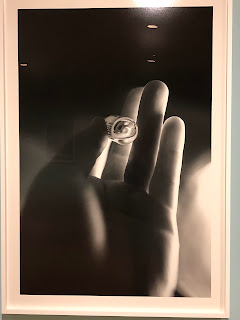Here's some of what I've been up to this past month!
Favorites
Middle School Band Concerts: A family member plays tenor saxophone in the school concert band AND the school jazz band. Last month there was a "Band Festival" with multiple school bands from our district getting together for an evening concert in the high school gym. There was also a regular school concert later in the month that was really nice. I adore that school families in our area are partaking in jazz together.
Drawing Class: I signed up for a 6-week class at the local art school. Every class gets harder as I learn more and more things that I can be looking for and doing in my drawings. I'm also trying to draw at least once a week on my own. Here is some of my work from class.
Consumed
Podcasts: After listening to Scamanda in February, I've been binging additional long narrative podcasts. The ideal "season" length for one of these in-depth stories is about 8 episodes. I do like ones about scams, like these:
- Believe in Magic--this is about a mother-daughter pair who founded a non-profit to help sick children, but then probably used the funds to do things like travel to Disneyland
- Filthy Ritual--bonkers tale of a woman who persuaded people to give her large amounts of money for shamanic purposes. If you have a problem, she'll take your money and nail it to a tree in the Amazon and then when your problem is solved you get all the money back. (Except... she didn't actually do any of that)
- Unravel: Snow Ball--in this story a serial entrepreneur travels the world and persuades locals wherever to help her open a bar or restaurant, but then she does strange things with the accounting and then disappears. This one seemed a little more of a grey area--I wondered if the woman was maybe an alcoholic or drug addict who really was just terrible with people, money, memory, and math.
- Who the Hell is Hamish?--This Australian psychopath travels around his own country as well as Canada, persuading various people to give him all of their life savings for non-existent investments. He's in prison now.
Rebecca: The 1940 psychological thriller directed by Alfred Hitchcock and based on the book by Daphne duMaurier has long been a favorite movie of mine. I think I may have first seen it when I was about 10 years old. But it's been MANY years since viewing it, and my spouse has never seen it. We finally got a copy to watch and spent the next 2+ hours enjoying Laurence Olivier being a grump and Joan Fontaine being jejune.
It Might Get Loud: This 2008 documentary features 3 guitar greats: Jimmy Page, The Edge, and Jack White. They sit around and talk about guitars and play guitars. The film also does a nice job tracing their musical lives from childhood and interviewing them in their home settings. I already have been forming a plan to bring all of my LPs out of the basement so the family can listen to them more often, and this movie seemed to be a sign that I should continue with this idea.
Least Favorite
Without getting into a lot of detail, I am sad to say that we lost our beloved orange car in the month of March. We are all fine--it was an insurance issue after what seemed to be a minor fender bender. Goodbye sweet car, we loved you so much. I have photos but can't bear to post them because looking at that cheerful little orange car hurts my feelings.
Phone Photos
I decluttered 17 T-shirts that I have not worn in years. This United Auto Workers T-shirt is from when I was briefly a union member while working at a bookstore in Massachusetts.
This T-shirt was from the 1990 Spring Tour by ARF ARF records. I was not at the tour--this was a hand-me-down from somebody else. It's pretty cool but it's stained and smells odd and obviously is about 35 years old, so I'm saying goodbye.
EASTER!




















































